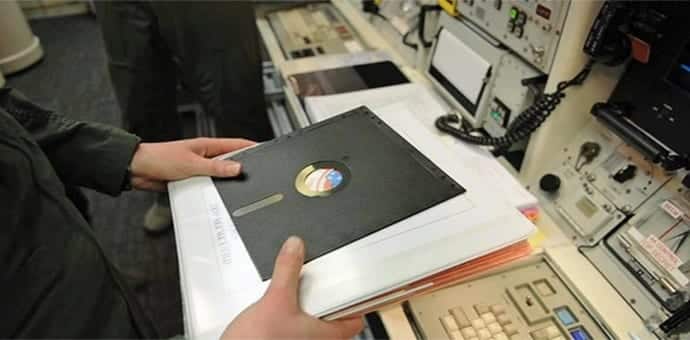U.S. nuclear weapons unit is still using obsolete 1970s IBM computer and floppy disk – GAO Report
According to a report released by the United States’ Government Accountability Office (GAO) on Wednesday, the U.S. nuclear weapons force still uses floppy disks designed in the 1970s to coordinate some of its functions, which in turn has raised serious concerns about cybersecurity, efficiency, and cost.
The GAO said the Pentagon was one of several departments where “legacy systems” urgently needed to be replaced. The report says that a Pentagon command and control system that is responsible for US nuclear forces, such as intercontinental ballistic missiles, nuclear bombers, and tanker support aircraft runs on an IBM Series/1 computer and uses 8-inch floppy disks.
And the Justice Department uses a 35-year-old system that runs the issue-plagued Java coding language to compile information on federal inmate work assignments and security levels at federal prisons. Also, the Treasury’s individual and business master files, the authoritative data sources for taxpayer information uses systems that are about 56 years old, and use an outdated computer language that is difficult to write and maintain.
The GAO said the federal government was spending a lot more on “operations and maintenance” of its computer systems than it is on “development, modernisation and enhancement.” It was found that about three-fourths of the $80 billion budget goes to keep aging technology running, and the increasing cost is short-changing modernization.
The finding, which is a part of a new report from the GAO, also points out to the struggle of upgrading hardware and software inside these massive federal bureaucracies and recommends that the Obama administration’s multibillion-dollar IT modernization plan faces a steep demanding climb.
“Federal legacy IT investments are becoming increasingly obsolete: many use outdated software languages and hardware parts that are unsupported,” GAO said. “Agencies reported using several systems that have components that are, in some cases, at least 50 years old.”
“Replacement parts for the system are difficult to find because they are now obsolete,” GAO noted.
According to the GAO, federal spending on new versus old systems reflects the wrong priorities making the matters even worse. For instance, the government last year spent $61.2 billion (£42 bn) on operations and maintenance, compared with $19.2 billion in the other category.
The report said that the Pentagon is expected to completely replace the system by the end of 2020.

